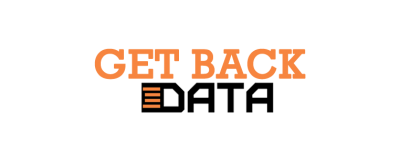Monitoring Things from Anywhere with Smart Technology
It once took hands-on rounds, in-person observations, and some luck to monitor distant people, places and systems. Now remote connectivity changes the game through online dashboards, mobile access and real-time alerts. This allows tracking conditions from facilities to fleets wherever they are. Remote monitoring leverages Internet of Things (IoT) sensors and cloud software expanding visibility. Organizations gain more control by seeing further and responding quicker based on data versus guesswork.
Overseeing Facilities and Control Rooms
Traditionally, facility managers directly walked production lines and control room floors to supervise operations. With remote monitoring IoT platforms, countless internal sensors now feed into cloud-based software for easy centralized access. Data streams like energy use, foot traffic, parking spot availability and more create a digital twin replica viewable remotely. According to the experts over at Blues Iot, some systems even connect semi-autonomous drones and robot mobile cameras patrolling sites. Managers can investigate sensor anomalies, trace material flows or check maintenance needs without stepping onsite. Virtual tours occur anytime, anywhere, while rapid insights speed up decisions. Alarm notifications help dispatch appropriate response teams faster as well. Rather than depending on infrequent in-person visits, remote monitoring enables 24/7 vigilance.
Optimizing Fleets and Logistics
Sprawling supply chain logistics poses challenges tracking vehicles and cargo end-to-end. Fleet telematics solve basic GPS tracking but leave asset contents and condition unclear once en route. Remote monitoring IoT now connects truck diagnostics for engine health and tire pressure while sensors track temperature, humidity and light exposure affecting cargo. Route or driver deviations also trigger alerts. Logistics managers gain transparency from loading to final delivery even across continents. They can identify inefficiencies like unnecessary idling and reroute transports to avoid congestion in real-time rather than days later. With assets and activities monitored remotely, it is easier to meet distribution KPIs through data-driven dispatch optimization.
Safeguarding Infrastructure Integrity
Civil infrastructure like pipelines, power transmission towers and railways span remote terrain, making incident monitoring difficult. Nevertheless, failures can cascade into catastrophic outages. Deploying multi-purpose IoT sensors along assets now creates a connected nervous system, maintaining infrastructure integrity. Sensors continuously feed back vibration, temperature and other telemetry, allowing remote anomaly detection indicative of faults. Analytics differentiate benign changes from concerning patterns needing investigation via drones. This avoids wasted visual inspections across thousands of miles when conditions seem normal. Maintenance crews also strategically deploy sensors and cameras providing eyes on fragile areas prone to weather damages, erosion or accidents even in deep wilderness. Monitoring infrastructure systemically manages remote risk better.
Caring for Loved Ones
Caregivers can supervise children, aging parents, or pets when not physically present. In-home IoT monitoring lets you choose which data to monitor, prioritizing peace of mind over privacy concerns. Passive sensors track activity patterns and room entry/exit events without recording private details. Unusual quietness or stillness should trigger a caregiver check-in. Location tags and wearables help find misplaced items or wandering persons if needed, while environment sensors confirm safe conditions. To ensure that patients are taking their medications correctly after they are discharged from the hospital, clinicians use smart pill bottles to remotely monitor medication adherence. By ethically leveraging home sensors, remote caregiver confidence improves. Even small daily monitoring gestures show loved ones they are not alone.
Conclusion
The ability of the IoT to remotely monitor and overcome information barriers is a tremendous benefit. Organizations enhance oversight, reaction time and planning with enhanced telemetry. Critical infrastructure better manages remote risks while logistics synchronize complex vehicle and cargo flows. For individuals, home IoT caregiving sustains relationships despite distance. The world seems smaller, yet connections grow deeper as data dissolves visibility constraints across all contexts.











